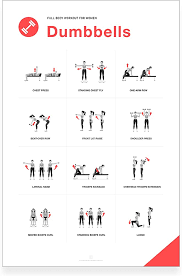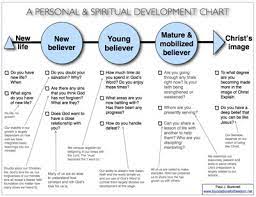Weight Exercises: Strengthen Your Body and Boost Your Fitness Journey
When it comes to fitness, incorporating weight exercises into your routine can be a game-changer. Whether you’re a beginner or an experienced gym-goer, weight exercises offer numerous benefits that can help you reach your fitness goals faster and more effectively.
One of the primary advantages of weight exercises is their ability to build strength and muscle mass. By challenging your muscles with resistance, you stimulate their growth and development. This not only enhances your physical appearance but also improves your overall functional strength, making everyday tasks easier to perform.
Weight exercises are incredibly versatile, allowing you to target specific muscle groups or engage multiple areas simultaneously. From dumbbells and barbells to kettlebells and resistance bands, there are various tools available to suit different preferences and fitness levels. This versatility ensures that you can tailor your workouts to meet your individual needs and goals.
Another benefit of weight exercises is their ability to increase bone density. As we age, our bones naturally become weaker, making us more susceptible to fractures and osteoporosis. Engaging in weight-bearing activities helps combat this by placing stress on the bones, stimulating them to become stronger and denser over time.
In addition to building strength and improving bone health, weight exercises also play a crucial role in boosting metabolism. The more muscle mass you have, the higher your resting metabolic rate becomes. This means that even when at rest, your body burns more calories throughout the day. Incorporating weight exercises into your routine can help accelerate fat loss while providing a toned physique.
It’s important to note that proper form and technique are essential when performing weight exercises. Start with lighter weights or resistance levels if you’re a beginner, gradually progressing as you become more comfortable with the movements. If needed, seek guidance from a certified personal trainer who can teach you proper form and create a program tailored to your abilities.
To maximize the benefits of weight exercises, it’s recommended to combine them with cardiovascular exercises and a balanced diet. This holistic approach helps create a well-rounded fitness routine that promotes overall health and well-being.
Remember, consistency is key. Aim to incorporate weight exercises into your routine at least two to three times per week, allowing your muscles enough time to recover and adapt. Over time, you’ll notice improvements in strength, endurance, and body composition.
Whether your goal is to lose weight, gain muscle, or simply improve your overall fitness level, weight exercises are an essential component of any successful fitness journey. So grab those weights and start challenging yourself today. Your body will thank you for it!
5 Essential Tips for Effective Weight Exercises
- Start slow and gradually increase intensity. It’s important to build up strength and endurance gradually, so start with light weights or bodyweight exercises and slowly work your way up.
- Focus on form over weight. Proper form is essential for any exercise, but especially when it comes to weight exercises as it can help prevent injury and maximize results.
- Incorporate compound movements into your routine. Compound movements are multi-joint exercises that involve multiple muscle groups at once, such as squats or deadlifts, which can help you get more out of your workout in a shorter amount of time.
- Mix up your routine often to prevent boredom and plateaus in progress. Try different types of exercises, reps and sets, or switch up the order of exercises each week to keep things interesting and challenging for yourself!
- Don’t forget about rest days! Give your body the time it needs to recover between workouts by taking one or two days off each week from weight training (and all other forms of exercise).
Start slow and gradually increase intensity. It’s important to build up strength and endurance gradually, so start with light weights or bodyweight exercises and slowly work your way up.
Start Slow and Gradually Increase Intensity: The Key to Effective Weight Exercises
When it comes to weight exercises, it’s tempting to dive right in and push yourself to the limit. However, taking a gradual approach is crucial for building strength and endurance effectively while minimizing the risk of injury. Starting slow and gradually increasing intensity is the key to long-term success.
Begin your weight exercise journey by starting with light weights or even bodyweight exercises. This allows your body to adapt to the movements and build a solid foundation of strength. It’s important to focus on proper form and technique during this initial phase, as it sets the stage for future progress.
By starting with lighter weights or bodyweight exercises, you give your muscles time to adjust and prevent unnecessary strain. This approach also helps you develop a strong mind-muscle connection, allowing you to better engage the targeted muscles and maximize the benefits of each exercise.
As you become more comfortable with the movements, gradually increase the intensity by adding more resistance or using heavier weights. This progressive overload principle challenges your muscles, forcing them to adapt and grow stronger over time. It’s important to listen to your body during this process; if an exercise feels too challenging or causes pain, take a step back and reassess your approach.
Remember that Rome wasn’t built in a day, and neither is strength or endurance. Patience is key when it comes to weight exercises. Consistency in your training is far more important than rushing through heavy weights without proper form.
In addition to gradually increasing intensity with weights, it’s also essential to vary your workouts over time. Incorporate different exercises that target various muscle groups, ensuring a well-rounded routine that promotes overall strength development.
Lastly, don’t forget about rest days! Your muscles need time to recover and repair after intense workouts. Allow yourself adequate rest between sessions so that you can come back stronger for your next training session.
Starting slow and gradually increasing intensity may seem counterintuitive to some, but it’s a proven strategy for long-term success in weight exercises. By building a solid foundation, focusing on technique, and progressively challenging yourself, you’ll see significant improvements in strength and endurance over time. So take it one step at a time, and enjoy the journey towards a stronger and fitter you!
Focus on form over weight. Proper form is essential for any exercise, but especially when it comes to weight exercises as it can help prevent injury and maximize results.
Focus on Form Over Weight: The Key to Safe and Effective Weight Exercises
When it comes to weight exercises, many people believe that the heavier the weight, the better the results. However, a crucial tip to remember is that focusing on form over weight is essential for a safe and effective workout.
Proper form is the foundation of any exercise routine, but it becomes even more critical when incorporating weights. By maintaining correct form throughout your workouts, you not only reduce the risk of injury but also maximize the benefits of each exercise.
One of the main reasons why form is crucial in weight exercises is because it helps target the intended muscles effectively. When performing an exercise incorrectly or with poor form, you may end up relying on other muscle groups or compensating with improper movement patterns. This not only diminishes the effectiveness of the exercise but also increases the risk of strain or injury.
By focusing on proper form, you ensure that you’re engaging and activating the targeted muscles optimally. This leads to increased muscle recruitment and better overall results. So instead of solely focusing on lifting heavier weights, prioritize executing each movement with precision and control.
In addition to preventing injuries and maximizing muscle engagement, proper form also helps improve your body awareness and mind-muscle connection. By concentrating on your movements and paying attention to how your body responds, you can make necessary adjustments to ensure optimal alignment and activation throughout each repetition.
To maintain proper form during weight exercises:
- Start with lighter weights: It’s important to master proper technique before increasing weight load. Begin with weights that allow you to perform each exercise with correct form and gradually progress as you become more comfortable and confident.
- Pay attention to alignment: Ensure that your body is in proper alignment throughout each movement. This includes maintaining a neutral spine, engaging your core muscles, and keeping joints stable.
- Control your movements: Avoid using momentum or relying on gravity during weight exercises. Instead, focus on controlled, deliberate movements to fully engage the targeted muscles.
- Seek guidance if needed: If you’re unsure about proper form or technique, consider working with a certified personal trainer. They can provide guidance, demonstrate correct form, and help you develop a safe and effective weight training program.
Remember, it’s not about how much weight you lift, but how well you perform each exercise. By prioritizing form over weight, you’ll not only reduce the risk of injury but also achieve better results in your fitness journey. So take the time to learn and practice proper form—it will be worth it in the long run!
Incorporate compound movements into your routine. Compound movements are multi-joint exercises that involve multiple muscle groups at once, such as squats or deadlifts, which can help you get more out of your workout in a shorter amount of time.
Get More Bang for Your Buck with Compound Movements in Your Weight Exercise Routine
When it comes to maximizing your workouts, incorporating compound movements into your weight exercise routine is a game-changer. These multi-joint exercises engage multiple muscle groups simultaneously, allowing you to get more out of your workout in a shorter amount of time.
Compound movements, such as squats or deadlifts, are incredibly efficient because they require the coordination and activation of various muscles throughout your body. Unlike isolation exercises that focus on specific muscles, compound movements work multiple joints and muscle groups together, leading to greater overall strength and functional fitness.
One of the primary benefits of compound movements is their ability to burn more calories. Since they involve larger muscle groups and require more effort, they naturally increase your heart rate and energy expenditure. This means that even after you finish your workout, your body continues to burn calories as it recovers.
Incorporating compound movements into your routine can also lead to significant gains in strength and muscle mass. By challenging multiple muscle groups simultaneously, these exercises stimulate the release of growth hormones, promoting muscle growth throughout your entire body. This not only helps you build strength but also enhances overall muscular balance and stability.
Another advantage of compound movements is their practicality in real-life situations. Think about it: when you lift groceries or pick up something heavy from the ground, you’re not isolating specific muscles—you’re engaging multiple areas at once. By training with compound movements, you’re better preparing yourself for everyday activities and reducing the risk of injuries caused by imbalances or weaknesses.
To incorporate compound movements into your weight exercise routine effectively, start by focusing on key exercises like squats, deadlifts, lunges, bench presses, overhead presses, and rows. These exercises recruit numerous muscle groups simultaneously while providing a solid foundation for further progressions.
As with any exercise program, proper form is crucial to prevent injuries and maximize results. Take the time to learn and practice correct technique, and consider working with a qualified fitness professional if you’re unsure. They can guide you through the movements, help you establish a suitable weight and rep range, and ensure that you’re performing the exercises safely and effectively.
Remember, variety is key to continuous progress. While compound movements should be a staple in your routine, don’t neglect other exercises that target specific muscles or provide additional benefits. Aim for a well-rounded program that includes both compound movements and isolation exercises to achieve optimal results.
By incorporating compound movements into your weight exercise routine, you’ll not only save time but also unlock numerous benefits for your overall fitness journey. So, challenge yourself with squats, deadlifts, and other multi-joint exercises—it’s an investment in your strength, efficiency, and long-term well-being.
Mix up your routine often to prevent boredom and plateaus in progress. Try different types of exercises, reps and sets, or switch up the order of exercises each week to keep things interesting and challenging for yourself!
Keep Your Fitness Journey Fresh: The Power of Mixing Up Your Weight Exercise Routine
Are you finding yourself stuck in a fitness rut? Do your weight exercises feel monotonous and predictable? It’s time to shake things up! One of the best ways to keep your fitness journey exciting and prevent plateaus in progress is by mixing up your routine regularly.
When we perform the same exercises, repetitions, and sets repeatedly, our bodies become accustomed to the routine. While consistency is important for building strength and muscle, too much repetition can lead to diminishing returns. By introducing variety into your weight exercise routine, you can challenge your muscles in new ways and maximize your progress.
One way to mix things up is by trying different types of exercises. Instead of sticking to the same old routine, explore new movements that target the same muscle groups or even engage different areas altogether. For example, if you’ve been doing traditional squats for leg day, switch it up with lunges or step-ups. This not only adds excitement but also introduces novel stimuli that can lead to increased muscle activation and growth.
Another way to keep things interesting is by varying the number of repetitions and sets you perform. If you typically do three sets of ten reps for each exercise, consider incorporating pyramid sets (increasing or decreasing weight with each set) or drop sets (reducing weight after reaching failure). Changing the rep range challenges your muscles in different ways, promoting strength gains and preventing boredom.
Switching up the order of exercises each week is yet another effective strategy. Our bodies adapt quickly when we follow a fixed routine, so rearranging the sequence keeps our muscles guessing. Not only does this provide mental stimulation but it also ensures that different muscle groups are prioritized during each workout session.
By embracing variety in your weight exercise routine, you’ll not only prevent boredom but also challenge yourself physically and mentally. You’ll find yourself looking forward to each workout session with anticipation, knowing that something new and exciting awaits.
Remember, it’s essential to listen to your body and progress at your own pace. Start by incorporating small changes and gradually increase the level of variation over time. If you’re unsure about how to mix up your routine effectively, consult with a fitness professional who can guide you in creating a well-rounded program tailored to your goals and abilities.
So, don’t let boredom or plateaus hinder your progress. Embrace the power of mixing up your weight exercise routine. Your body will thank you for the fresh challenges, and you’ll be on your way to reaching new heights in your fitness journey!
Don’t forget about rest days! Give your body the time it needs to recover between workouts by taking one or two days off each week from weight training (and all other forms of exercise).
Don’t Forget About Rest Days: Let Your Body Recover and Thrive
When it comes to weight exercises and fitness, it’s easy to get caught up in the excitement and motivation to push yourself harder every day. While dedication and consistency are essential, it’s equally important to prioritize rest days in your training routine.
Rest days are not an excuse for laziness; they are a vital component of any effective fitness program. When you engage in weight training or any form of exercise, you place stress on your muscles, joints, and other body systems. These stressors create micro-tears in your muscles, which is a normal part of the muscle-building process.
Rest days provide your body with the time it needs to repair and recover from these micro-tears. It’s during this recovery period that your muscles rebuild themselves stronger than before, leading to increased strength and overall fitness gains. Without adequate rest, you risk overtraining, which can lead to fatigue, decreased performance, and even injury.
Taking one or two days off each week from weight training (and all other forms of exercise) allows your body to replenish energy stores, reduce inflammation, and restore hormonal balance. It also gives your central nervous system a chance to recover from the demands placed on it during intense workouts.
Rest days are not only beneficial physically but also mentally. They provide an opportunity for relaxation and rejuvenation. Giving yourself permission to take a break can help prevent burnout and keep you motivated in the long run.
However, rest days don’t mean you have to be completely sedentary. Engaging in light activities such as walking or stretching can promote blood flow and aid in recovery without putting additional stress on your muscles. Listen to your body and choose activities that make you feel good while allowing ample time for rest.
Remember that everyone’s recovery needs may vary based on factors such as age, fitness level, and intensity of workouts. Pay attention to how your body feels and adjust your rest days accordingly. If you’re feeling excessively fatigued or experiencing persistent muscle soreness, it may be a sign that you need to prioritize more rest.
In conclusion, don’t underestimate the importance of rest days in your weight training journey. By allowing your body the time it needs to recover and repair, you set yourself up for long-term success. So, embrace those rest days with open arms and give yourself permission to recharge both physically and mentally. Your body will thank you by performing at its best when it’s time to hit the weights again.



